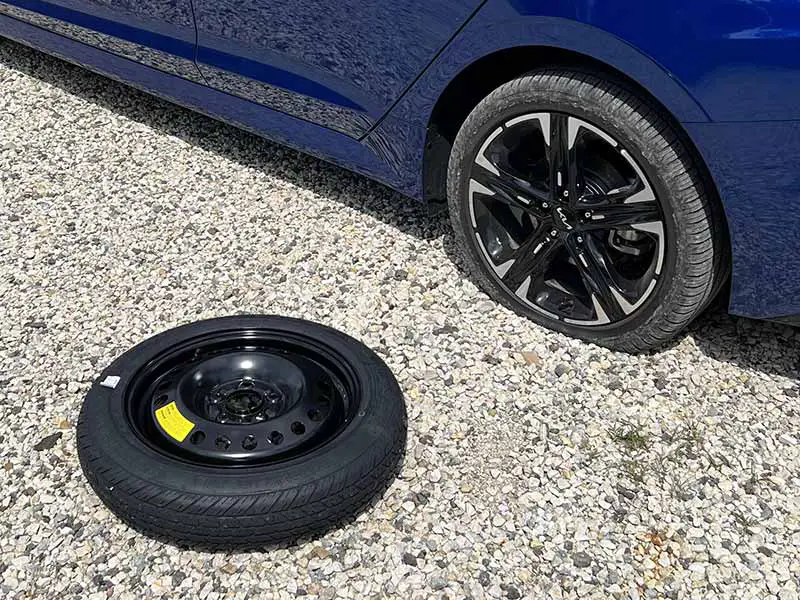If you’ve ever had a flat tire, you know how much of an inconvenience it can be. But do you know how long your car can sit on a flat tire without causing damage?
You probably aren’t surprised to learn that letting a car sit on a completely flat tire overnight or longer can lead to structural damage to the tire. This type of flat tire damage can’t be fixed by a tire shop.
How Long Can A Car Sit On A Flat Tire?
A car can sit on a flat tire for no more than a day or two to avoid damage. It’s important to fix the flat tire as soon as possible.
Driving on a flat or underinflated tire will quickly cause damage to the tire, wheel, and car’s suspension, as well as increase danger to the driver and others on the road.
In this article, we’ll answer that question and help you understand the risks involved. Why should you care about this? Well, knowing how to handle a flat tire situation can save you time, money, and keep you safe on the road.
Let’s take a closer look.
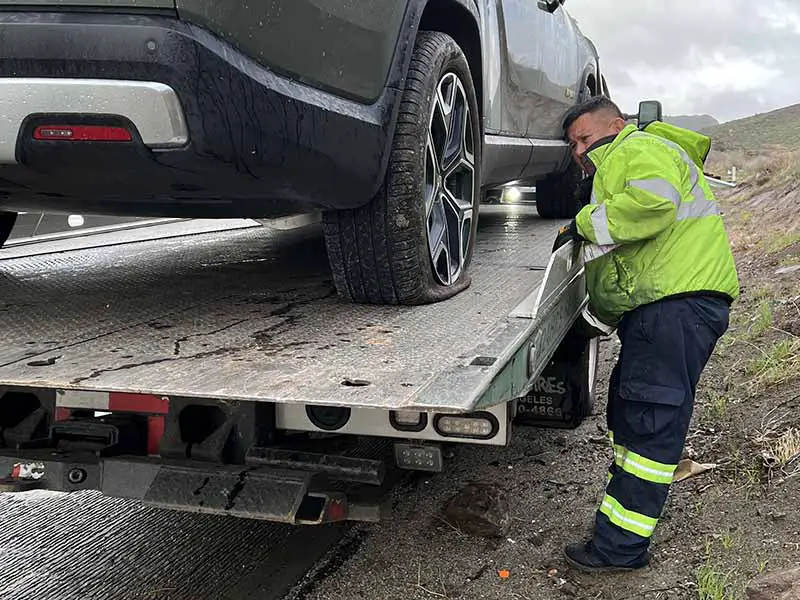
Risks of Leaving a Car on a Flat Tire
Let’s talk about the tire itself. When a car sits on a flat tire, it can cause damage to the tire’s sideswalls. The tire can get pinched or squished, leading to cracks or tears. Another issue is tread separation. When a flat tire is left alone for too long, the tread can start to come apart from the rest of the tire. Not good!
If a car sits on a flat tire for too long, the wheel can get damaged because it’s taking on more weight at a focused point than it should. This can lead to dents, bends, or even cracks in the wheel.
Can I Leave My Car Parked With A Flat Tire?
The truth is, it’s best to take care of a flat tire as soon as you can. But, sometimes that’s not possible, so let’s dive into what factors can affect how long a car can sit on a flat tire.
The all-to-common answer to many questions like this is it depends. There are several factors that can affect how long you can leave your car parked before there is tire damage.
Here are some factors to keep in mind:
Tire Type
First, the type of tire matters. Some tires are stronger and more durable than others, which means they can handle the vehicle’s weight while flat for a little longer. But even the toughest tire won’t last forever when it’s flat, so it’s still important to fix it as soon as you can.
Vehicle Weight
Next, the weight of your vehicle plays a role. A heavier car or truck puts more pressure on a flat tire, which can cause damage more quickly. So, if you’re driving a big, heavy truck, you’ll want to be extra careful about not leaving it on a flat tire for too long.
Weather Conditions
Weather and temperature can also affect how long a car can sit on a flat tire. Hot weather can make the rubber in your tires break down faster, which means the tire could get damaged more quickly if it’s flat. Cold weather can cause the air inside your tires to contract, making a flat tire look even flatter and putting more stress on the sidewalls.
It’s best to fix a flat tire immediately. Factors like the type of tire, the weight of your vehicle, and the weather can affect how long a car can sit on a flat tire without causing damage. But, to keep your car in good shape and avoid problems, try not to leave the entire weight of your vehicle resting on a deflated tire for more than a day or two.
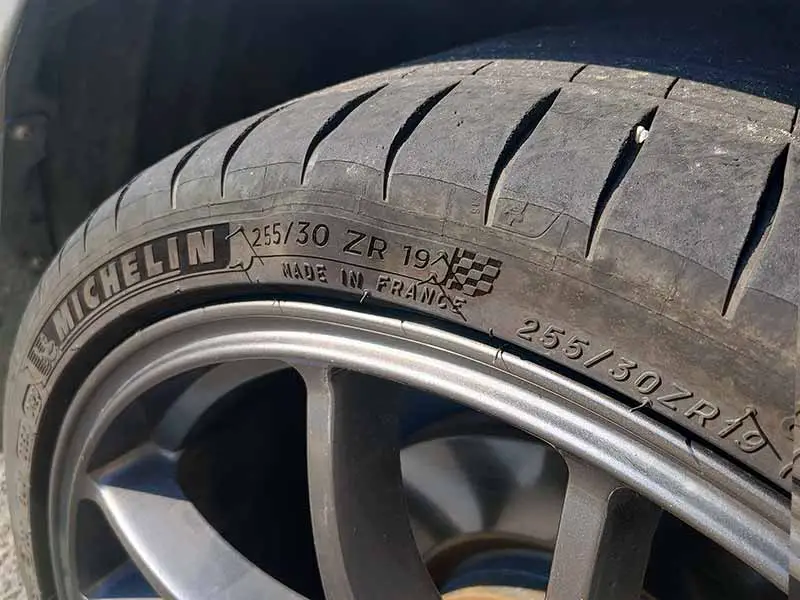
How Flat Does A Tire Have To Be To Risk Sidewall Damage?
The sidewall is important because it helps the tire keep its shape and stay strong. When a tire starts to lose air, the sidewall can be in danger. The lower the air pressure in the tire the more stress the sidewalls will experience.
First, let’s discuss the risks while your car is parked. If your tire is just a little bit low on air, the sidewall is probably okay. But if the tire looks really squished or is almost touching the ground, the sidewall can get pinched or bent. Over time, this can lead to cracks or tears in the sidewall. So, if you see a very flat tire on your parked car, it’s important to take care of it as soon as possible to protect the sidewall.
Now, let’s talk about the risks while you’re driving. Driving on a tire that’s even just a little bit low on air can be risky for the sidewall. When you drive, your tires heat up, and if there isn’t enough air in the tire, the sidewall can get too hot and start to break down. This can lead to a blowout, which is when the tire suddenly loses all its air and can cause you to lose control of your car. Yikes! To avoid this, it’s a good idea to check your tire pressure regularly and make sure your tires have the right amount of air.
A tire doesn’t have to be completely flat to risk sidewall damage. Even if it’s just a little low on air, the sidewall can be at risk, especially while you’re driving. Make sure to check your tire pressure regularly and take care of any flat tires right away to keep your car running smoothly and safely!
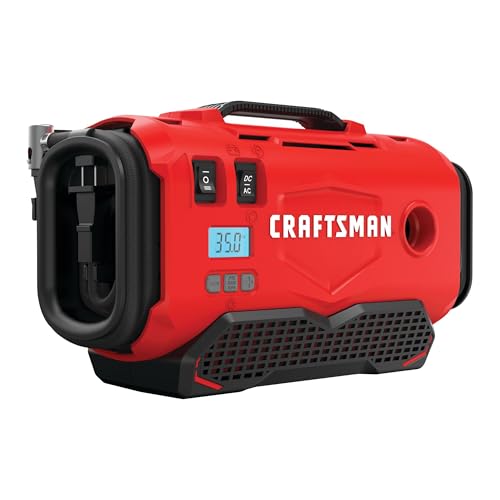
Craftsman V20 Inflator – Portable Air Compressor
What To Do If You Have A Flat Tire
If you’re driving and you notice your car has a flat tire, find a safe place to pull over. Look for a flat, stable spot away from traffic, like a parking lot or the side of the road. Turn on your hazard lights to let other drivers know you’re having trouble.
Now, let’s talk about changing the tire. If you have a spare tire and the tools to change it, you can do it yourself! Here are the basic steps:
- Make sure your car is in “park” and the emergency brake is on.
- Grab your spare tire, jack, and lug wrench (the tool that removes the nuts on your wheel).
- Use the lug wrench to loosen the nuts on the flat tire, but don’t take them off just yet.
- Place the jack under your car’s frame, near the flat tire, and use it to lift your car off the ground.
- Now, remove the nuts and the flat tire.
- Put the spare tire on the wheel, and replace the nuts, tightening them as much as you can by hand.
- Lower your car back to the ground using the jack, and then use the lug wrench to make sure the nuts are tight.
- Put your flat tire and tools back in your trunk, and you’re good to go!
But, what if you don’t have a spare tire or the tools to change it? No problem! You can call for roadside assistance. This might be a service that comes with your car insurance or a membership like AAA. They’ll send someone out to help you change your tire or tow your car to a nearby shop where they can fix the tire for you.
In the future, you can help prevent flat tires by taking good care of your tires. Make sure to check the air pressure regularly and keep them inflated to the right level. Also, have your tires rotated and inspected for wear and tear.
If you have a flat tire, find a safe place to pull over, and either change it yourself or call for help. Keep an eye on your tire pressure and stop driving as soon as you see a low tire pressure warning light on your dashboard.
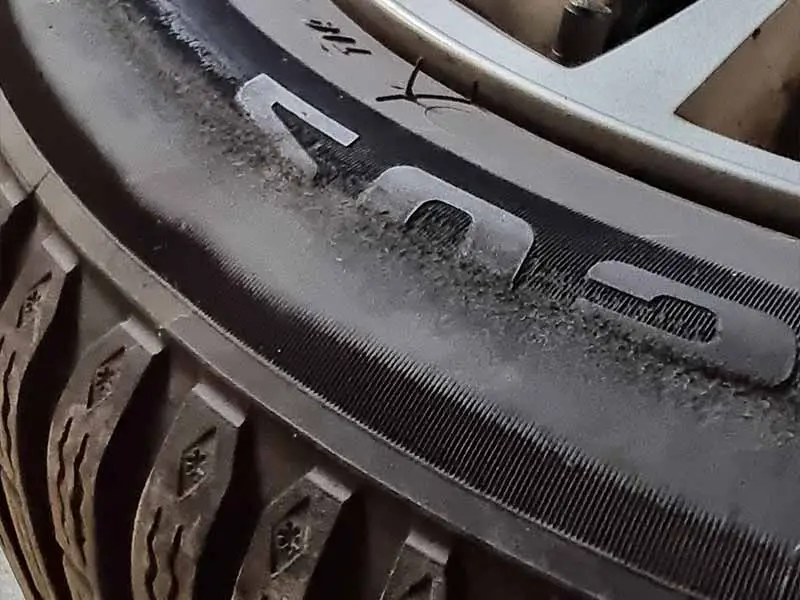
Dangers Of Driving On Underinflated Or Flat Tires
It’s not a good idea to drive on underinflated or flat tires. Even though it might be tempting to keep going, driving with a tire that doesn’t have enough air can be dangerous and cause problems for your car.
First, let’s chat about the risks to your car. Driving on an underinflated or flat tire can damage the tire itself, as well as the wheel that it’s attached to. It can also harm your car’s suspension, which helps keep your ride smooth and stable. So, while it’s not great to have your car parked on a flat tire, it’s even worse to drive on one because you could end up with even more damage.
Now, let’s talk about the dangers for you and other drivers on the road. When your tire is low on air or completely flat, it can affect how well your car handles. This means it might be harder to steer, brake, or speed up when you need to. In some cases, driving on a flat tire can even cause a blowout, which is when the tire suddenly loses all its air and makes it very difficult to control your car.
The bottom line is, driving on a flat or underinflated tire is risky for both your car and your safety. It’s better to risk a little tire damage from being parked on a flat tire than to try driving with a flat tire and possibly cause a lot more harm.
Resources
Below are some links you may find helpful when learning about tires
- When does tire damage require replacement? – Autoweek
- Can all damaged tires be repaired? – Tire Rack
Final Thoughts
Dealing with a flat tire might seem like a hassle, but it’s important to handle it the right way to keep you and your car safe. Remember, a car shouldn’t sit on a flat tire for more than a day or two to avoid damage. Instead of driving on a flat or underinflated tire, take the time to fix it or call for help to avoid making a bad situation worse.
By taking care of your tires and being prepared for a flat tire situation, you’ll be better equipped to handle any unexpected bumps in the road.
Good luck and happy motoring.
